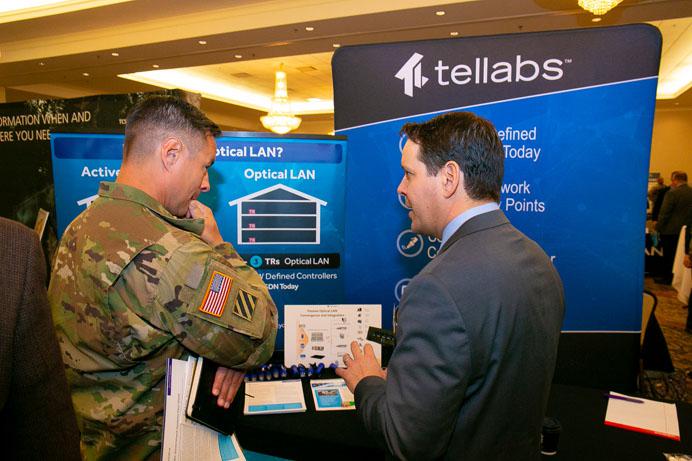Army Seeks Tools To Tame Data Deluge
“There’s a war out there, old friend. A world war. And it’s not about who’s got the most bullets. It’s about who controls the information. What we see and hear, how we work, what we think … it’s all about the information.” These lines are from the 1992 movie Sneakers, a film exploring the possibility of a decryption machine that could break any code, obliterating the ability to protect secrets. Nearly three decades later, the fictitious decoder still doesn’t exist, but the importance of data has grown exponentially.
As it continues its quest toward modernization, the U.S. Army certainly views information as a vital weapon in its arsenal to fight adversaries on the battlefield and in cyberspace. Data will contribute to successful operations by helping military leaders cut through the fog of war with unprecedented situational awareness. It will assist them in making decisions at the speed of war.
A tactical cloud filled with information will deliver data to the tactical edge, ensuring success.
The promise of information gathering, sharing and using is great, but the need to protect it is even greater. It’s one of the reasons the Army reaches out to industry for solutions that will not only help it collect and sort information but also protect it at rest and during collaboration.
As part of the 2020 AFCEA Army Signal Conference, Army leaders identified several challenges it faces in the data usage arena. With a theme of Data: The Ammunition of the Future Fight, they detailed the service’s requirements, which range from tools that assist the workforce to methods that draw on artificial intelligence (AI) and machine learning to establish enterprise cloud and data ecosystems.
In a continual effort to modernize, one of the service’s primary interests is in a data-aware workforce. But in addition to people, the Army is searching for technical assets, such as AI and machine learning solutions, that can help these cyber warfighters identify the right information attacking them from a variety of disparate sources.
In its data plan released late last year, the Army described a global, standards-based environment where information is visible, accessible, understandable, trusted, interoperable and secure (VAUTIS). To achieve this vision, the service needs a robust, integrated approach that serves warfighters and manages resources while implementing security measures.
To support this goal, the Army also will need the ability to identify, tag and register all authoritative data in a way that makes it easily discoverable across the enterprise. The service is turning to industry in search of a cutting-edge data management and sharing approach.
On the data user side, Army leaders seek a way to provide all credentialed warfighters access to both authoritative and non-authoritative data via commonly supported access methods. Registering both types of data in a shared space is one approach, but the service needs a way to link user access to authorize data sets with a user’s credentials.
The goal of this effort is to get data to decision makers whether it is stored on sensitive or classified portions of the environment so the information can support the desired mission outcomes. To accomplish this task, the Army needs clear data policies, rules and guidance for facilitating integration at all levels and metadata models and data architecture the enterprise architecture governs. Without this capability, Army leaders say the service will lose the ability to gain an operational advantage over adversaries because it cannot deliver all necessary and relevant data to the warfighter. Using advanced cross-domain solutions will enable those functions throughout Army operations, they state.
Data security is a constant struggle for all large organizations, and the Army is no exception. In seeking assistance from industry, the service is searching for ways to fortify its security position by reducing the number of vulnerable points through which adversaries can access and exploit its data. Specifically, it is interested in finding an aggressive accountability and auditing tool to inventory, safeguard and manage its information at all levels.
Because of the accessibility requirement, the solution also must first determine where all its data resides and then categorize and classify it, followed by tagging or applying attributes to it. The service prefers a methodology that would enlist automation with results that can be verified by humans with the assistance of AI and machine learning.







Comments